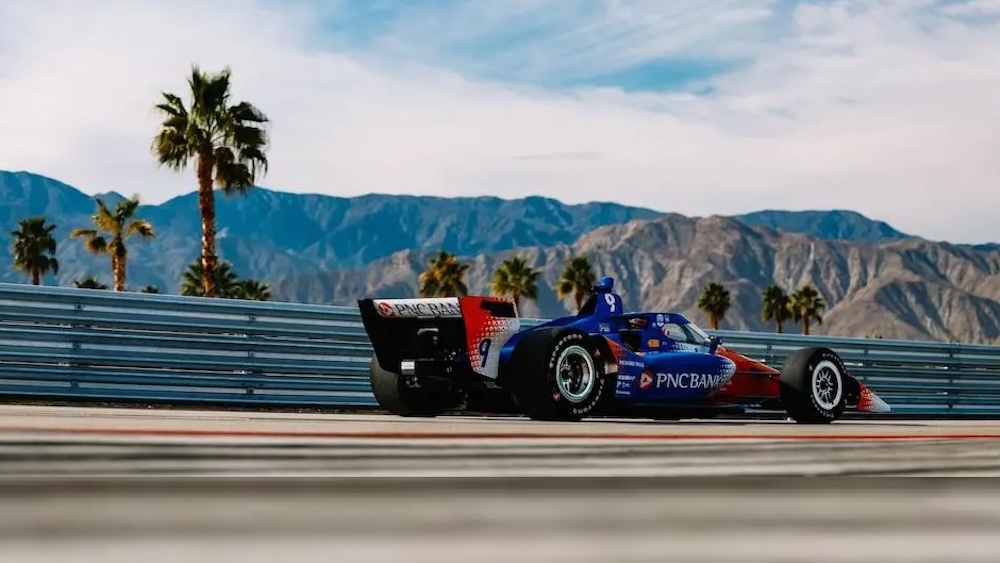IndyCar teams have plenty of track time to use during the Friday-Saturday open test at The Thermal Club’s winding, 17-turn road course.
Before the 10 teams and 27 drivers transition into Saturday evening’s qualifying sessions and head into Sunday’s heat races and the run for $1.7 million in cash on NBC with the $1 Million Challenge all-star race, there’s a lot of work to be done during the open test portion of the event.
With five combined hours of running available across two Friday sessions, four more hours on Saturday with another pair of sessions, and seven sets of tires to spread across the nine hours of testing, teams will orchestrate their actions in a variety of ways.
Among the most interesting teams with varying agendas to implement is Chip Ganassi Racing with its five cars for two champions, a sophomore, and two rookies. How a Scott Dixon will use the nine hours and seven sets is entirely different from how newcomer Kyffin Simpson will be deployed over Friday and Saturday, according to the team’s performance director.
[lawrence-auto-related count=3 category=1408]
“Normally on an open test we get four sets (of tires) per day, so we’re one set down on that but it’s not too big a deal,” Chris Simmons told RACER. “Even in a race weekend, you’re looking at 30ish minutes for a set of tires, and then when you start doing ins and outs and the time it takes to make some big changes to the cars between runs, we should be OK with the time available versus how many tire sets we have. We’d always love more sets, but I don’t think it will be an issue.
“And how you plan the tests is similar to a race weekend, because with a less experienced driver, they need more laps to get more out of themselves. You’re not going to be doing subtle changes to their car; you’re going to be doing bigger changes – certainly for the first session. Our test plan for our veterans will be some subtler changes, or maybe a big package changes where they can identify how that works in ways that are more subtle.
“That’s the kind of things we can do on a test day that we can’t do in a 45-minute practice session on a race weekend, and we lean on the veterans to do the more refined setup work. So with all the time we have at Thermal, we can go back and change [settings on the differential], change weight distribution, change springs, and come up with what you think might be a better overall package that gives the same balance, but might react a little bit differently.”
Last year’s Spring Training test at Thermal gave teams a chance to sample a new circuit and try to use some of what they learned at other road courses on the calendar. Although most drivers and engineers said Thermal’s 3.067-mile layout didn’t lend itself to making their cars faster at subsequent stops on the schedule, the new $1 Million Challenge race will make teams focus on perfecting their cars for this track, and this track alone.
“The first year, it was done in isolation and we were trying to figure out what we can learn to take other places, so this year, we have we have a little sprint race going on on Sunday, qualifying Saturday afternoon, so there will be focus on Thermal itself this year,” Simmons said.
“We go to Sebring to do street course testing for St. Pete and Long Beach, so we just have to interpret what we can from each track and use it to hone in on what changes are gonna give us bang for our buck when we do get to the other tracks. So we’ll see what we get here and what things we might be capable of taking to assist at other places.”
